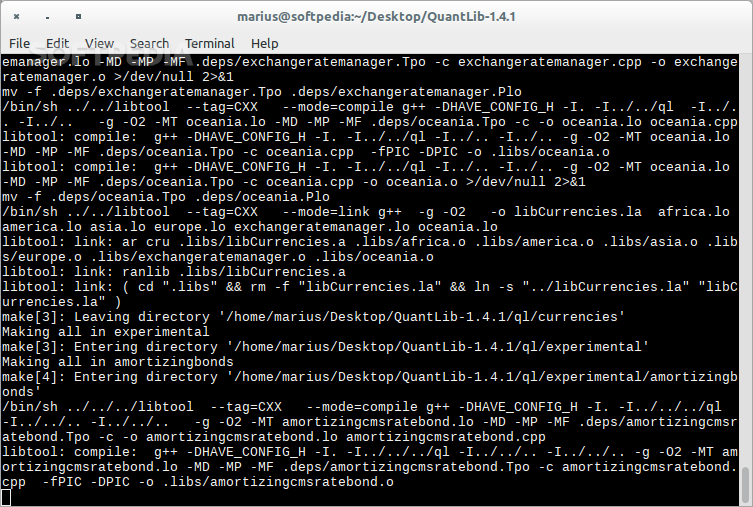Description
QuantLib is an open source and freely distributed library software implemented mainly in C++, exported to C#, Java, Ruby, Perl, Objective Caml, GNU R, Python, and Scheme. It is designed to act as a quantitative finance library that can be used for pricing, modeling, risk management and trading in real-life.
It provides a complex software framework that can be used for quantitative finance tasks. It offers various tools that are useful for both advanced modeling and practical implementation, with features like yield curve models, market conventions, PDEs, solvers, Monte Carlo, VAR, and exotic options.
In the future, the QuantLib library will also provide developers with bindings for other languages, as well as ports to Matlab/Octave, Gnumeric, S-PLUS/R, COM/SOAP/CORBA architectures, Mathematica, and FpML.
To install and use the QuantLib library on your GNU/Linux operating system, you will have to first download the latest version of the program from Softpedia, save the archive somewhere on your computer, extract its contents with an archive manager utility, and open the Terminal app.
In the terminal emulator window, use the ‘cd’ command to navigate to the location of the extracted archive files (e.g. cd /home/softpedia/QuantLib-1.4.1), run the ‘./configure && make’ command to configure and compile QuantLib, followed by the ‘sudo make install’ command to install it system wide.
Looking under the hood of the QuantLib library, we can notice that the C++, C#, Python, Java, Scheme and Ruby programming languages have been used to write its source code. The library is targeted towards developers, education, as well as the financial and insurance industry.
At the moment, it has been successfully tested with several distributions of Linux, but it should be compatible with all GNU/Linux operating systems. Both 64-bit and 32-bit CPU architectures are supported.
User Reviews for QuantLib FOR LINUX 1
-
for QuantLib FOR LINUX
QuantLib FOR LINUX provides a comprehensive framework for quantitative finance tasks. Ideal for advanced modeling and practical implementation with diverse tools.

